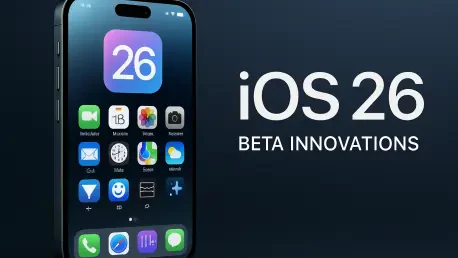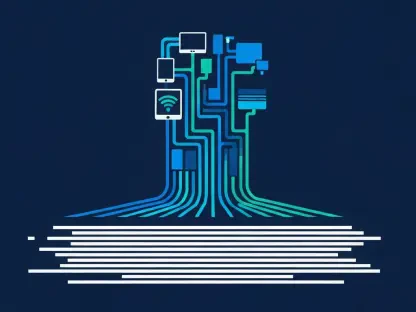In the tech world, Apple’s latest announcement about its upcoming iOS 26 public beta has generated significant anticipation among users and experts alike. The previews shared during the recent Worldwide Developers Conference highlighted a major overhaul of design and functionality, setting the stage for a transformative experience across Apple’s ecosystem. This year marks a pivotal moment for Apple as it reveals pioneering features and aesthetics that promise to redefine user interaction with devices. The introduction of Liquid Glass, a groundbreaking visual redesign after over a decade and coupled with enhancements across software applications, underscores Apple’s commitment to innovation. As details about public beta release schedules and features unfold, the excitement continues to build for what may be Apple’s most influential system update yet, offering extensive improvements that could affect everything from user interface to device performance.
1. Release Timeline and Enrollment Process
Apple’s approach to the iOS 26 beta rollout follows predictable patterns, with expectations built on the company’s previous launches. While the exact date for the public beta has not been officially announced, indications suggest it will be available to users in July, mirroring historical trends. For those keen on experiencing the latest developments firsthand, participation in the Apple Beta Software Program is straightforward. Enrolling simply requires visiting the program’s website and completing the sign-up process. Accessibility is emphasized as participation is open to any Apple Account holder who agrees to the terms. However, potential participants are warned about the provisional nature of a beta version, with its possible performance instability. It is advised not to use primary devices for testing to avoid inconveniences, and crucially, devices and information should be backed up to prevent data loss during installation.
Anticipation surrounding the beta availability highlights Apple’s strategic deployment across its device spectrum. The seamless integration across all devices is a standout feature, offering users on compatible iPhones, iPads, Macs, and more, a glimpse into future updates. This approach provides insights into optimization techniques and the design trajectory Apple is following. From older models to newer, advanced versions, every eligible device from iPhone 11’s wide range to the latest MacBook offerings is included. This simultaneous release across various devices exemplifies Apple’s dedication to unifying user experiences while offering a glimpse into feature compatibility and system enhancements that will benefit a myriad of users, ensuring older devices maintain performance viability while newer models can exhibit their full capabilities.
2. Innovations Across Apple’s Ecosystem
The introduction of Apple’s innovative features in iOS 26 signals a dynamic shift in how users will engage with their devices. Central to this revolution is the Liquid Glass design, a radical aesthetic upgrade appearing for the first time since Apple’s significant redesign era ago, propelling the user interface into a new dimension. This design was curated to reflect and respond to user interactions, providing a lifelike experience with tactile responses akin to realistic physics, enhancing both visual appeal and operational functionality. Another noteworthy addition is AutoMix for Apple Music, promising users studio-quality transitions through AI, enhancing personalization during music streaming, potentially revolutionizing the standard for audio experiences across applications.
These pivotal shifts extend beyond aesthetics, offering fundamental improvements to applications and communications. Messaging and phone call systems are significantly enhanced with features like AI-powered live translations, facilitating smoother, clearer cross-lingual communications through FaceTime and text messages. Complementing this is an upgraded screen-calling feature designed to identify spam calls autonomously, poised to streamline and safeguard everyday communications. Notably, the camera app undergoes a strategic revamp to introduce Library and Collections tabs that aid in user-friendly navigation and organization, removing clutter and optimizing usability. These profound improvements indicate Apple’s strategic focus on building products that maximize user experience and utility across all facets of device interaction.
3. Advanced Features in iPadOS and macOS
Alongside iOS developments, iPadOS 26 showcases significant advancements, amalgamating aesthetics and functionality with the Liquid Glass design, now bringing a refreshing overhaul to the tablet experience. iPad users will appreciate these changes, which extend to Apple’s hallmark features like AutoMix and Live Translations, ensuring consistency across devices while introducing novel capabilities. The standout update for iPads is the windowing system, cleverly mirroring desktop environments, allowing users to multitask efficiently using adjustable web pages and application windows. This development represents a game-changing asset for productivity, empowering users with the flexibility akin to traditional computing paradigms yet optimized for tablet use.
MacOS Tahoe 26 integrates these feature upgrades, harmonizing them with Apple’s handheld devices. A key addition is Live Activities on Mac, offering seamless synchronization with iPhones, thus providing harmonized access to critical activities like recent calls and contacts across different platforms. This enhances user convenience through fluid transitions and unified experiences between devices. As these updates propagate through Apple’s ecosystem, they illustrate a concerted effort to refine device interoperability, ensuring smoother workflows and interactions between Apple products. The ability to navigate between a desktop and mobile interface with ease reflects Apple’s strategic vision in creating versatile ecosystems that cater to contemporary user demands.
4. Exciting Updates for WatchOS and AirPods
The unveiling of WatchOS 26 introduces a sophisticated Workout Buddy feature, leveraging AI to deliver real-time feedback and motivational insights drawn from historical fitness data. By analyzing previous exercise patterns, the feature facilitates personalized fitness journeys, delivering adjusted insights and encouragement tailored to individual goals. This AI integration cultivates a personalized interaction, transforming each workout into an insightful fitness experience. Such innovations highlight Apple’s continued focus on enriching personal health and wellness technologies.
For audio enthusiasts, enhancements in AirPods firmware through iOS 26 offer transformative opportunities. Devices equipped with Apple’s ## chip, like AirPods Pro 2 and AirPods 4, witness significant audio quality improvements, adding studio-grade audio capabilities to voice recordings, elevating overall auditory experiences. Additionally, these AirPods now have expanded functionalities that interface with device applications seamlessly. The integration of camera controls via AirPods reflects forward-thinking innovation combining audio and device functionalities, allowing effortless operation of third-party camera applications. These advancements channel technological synergies that underline Apple’s commitment to premium user experiences across its vast product line.
Key Takeaways and Future Directions
Apple’s release strategy for iOS 26 beta is quite systematic, echoing patterns from previous launches. Although the official date for the public beta has yet to be announced, it’s anticipated to become accessible in July, aligning with past experiences. Those eager to explore the latest advancements can easily enroll in the Apple Beta Software Program by visiting the program’s website and completing the registration. This program is accessible to any Apple Account holder committed to the terms. Participants are cautioned that beta versions can be unstable, so it’s recommended not to use primary devices for testing purposes. To safeguard against data loss during the installation process, it’s crucial to back up both devices and information.
The buzz around the beta’s availability underscores Apple’s strategic rollout across its device range. The integration across devices is noteworthy, providing users on iPhones, iPads, Macs, and more, an early look at upcoming enhancements. This ensures older models maintain performance while newer ones fully leverage their capabilities, showcasing Apple’s aim for a consistent user experience.









